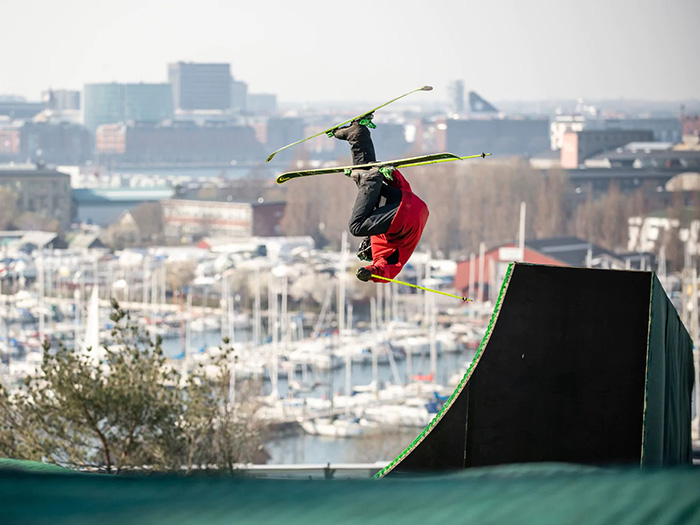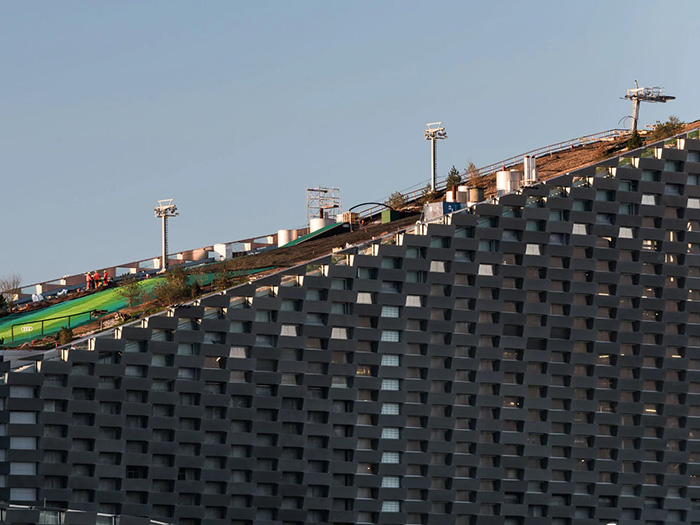Sustainable urbanisation: the example of Copenhagen
Copenhagen wants to be carbon neutral by 2025. An ambitious aim which the Danish capital, with its leading role in sustainable urban development, is resolutely pursuing.
Copenhagen’s commitment to sustainability is often held up as an example, and for good reasons. The Danish capital has set itself a precise target – climate neutrality by 2025. To meet this goal, it has adopted a series of initiatives covering all aspects of city life. One of the most innovative projects is known as Copenhill, the Amager waste-to-energy plant (Amager Bakke, literally “the hill of Amager”) which performs a dual function: it provides the energy required to heat tens of thousands of houses as well as being a recreational area in a very unusual setting.
Skiing on a waste-to-energy plant

Implementing sustainability as a comprehensive attitude to life. This is the key to attaining the status of a carbon-neutral city, and coincides with the mission of the Danish architect Bjarke Ingels. It was he who literally breathed life into the Amager Bakke waste-to-energy plant in the Copenhagen district of Christianshavn with his philosophy of “hedonistic sustainability”. The plant is a model of efficiency – as well as producing district heating for 60,000 households, it supplies electricity to 30,000 more – and functionality, as it has become a fully-fledged local recreational area with hiking trails and a 500-metre-long artificial ski slope.
A sustainable future
Designing urban spaces which take quality of life into account also requires ecological awareness, and the resulting plan must not impose limitations, but rather expand opportunities. The Copenhill project is an example of how a multi-functional infrastructure opens up new possibilities in cities, without neglecting sustainability. Ingels’ approach starts out from the questions of his fellow citizens: what will urban life look like in high-density areas? What needs and aspirations, as well as obligations, will their inhabitants have? Hedonistic sustainability, by definition, should be fun and create a responsible and attractive way of life in big cities.
Refuse as a resource

Up to 300 lorry loads of refuse are delivered daily to Amager Bakke. Spread throughout the year, that’s around 400,000 tonnes of residual waste from approximately 600,000 private households and nearly 70,000 businesses. The plant’s two incinerators then generate 2.7 MWh of heat and 0.8 MWh of electricity from each tonne of waste, at peak times burning up to 70 tonnes of waste per hour. Significant numbers, which will once again be communicated in a creative manner in order to sensitise residents. In the near future, for every tonne of CO2 released into the atmosphere by the plant, a gigantic ring of smoke will be blown out of its chimney stack for the population to see: an ironic reminder to the locals about their consumption and the need to act sustainably.
Becoming carbon neutral
Copenhagen is taking its plan to achieve climate neutrality by 2025 seriously. The costs of heating and electricity are to be reduced by 20 per cent in non-residential buildings and by 10 per cent in private homes. To achieve this, they will need to make even greater use of energy generation from wind power, geothermal energy and solar energy. The administration itself is leading by example here, deciding that the city’s vehicles will, in future, only be powered by electricity, hydrogen or biofuels. Copenhageners back these decisions: there are already more bicycles than cars in Copenhagen, and more than half of residents use this means of transport on their daily commute to work. By 2025, as much as 75 per cent of all journeys should be by bike or public transport.
Source: AUDI AG
